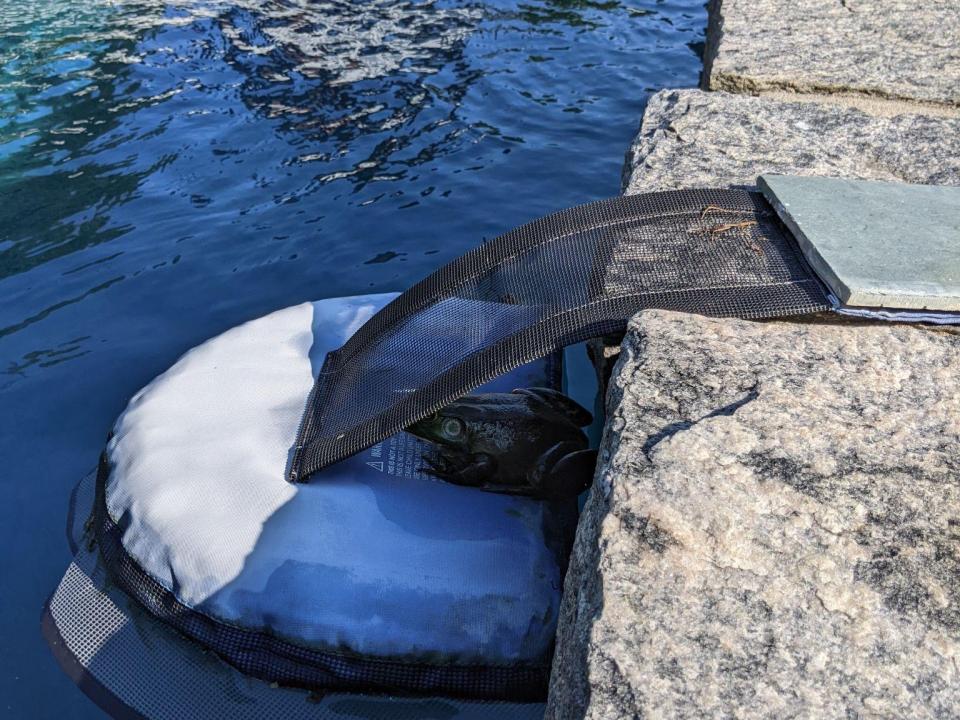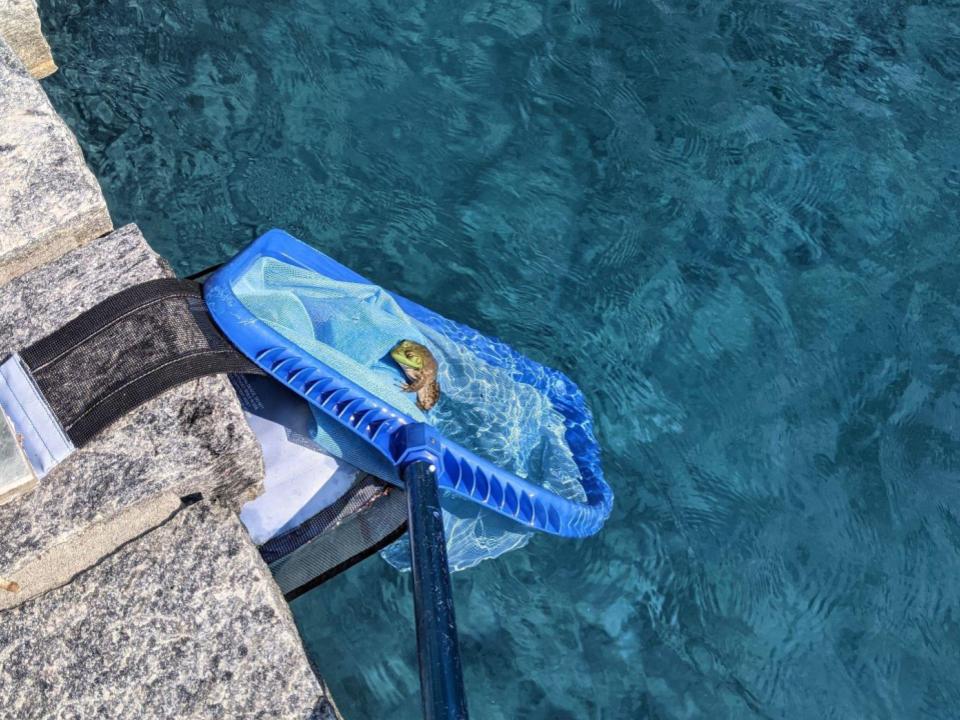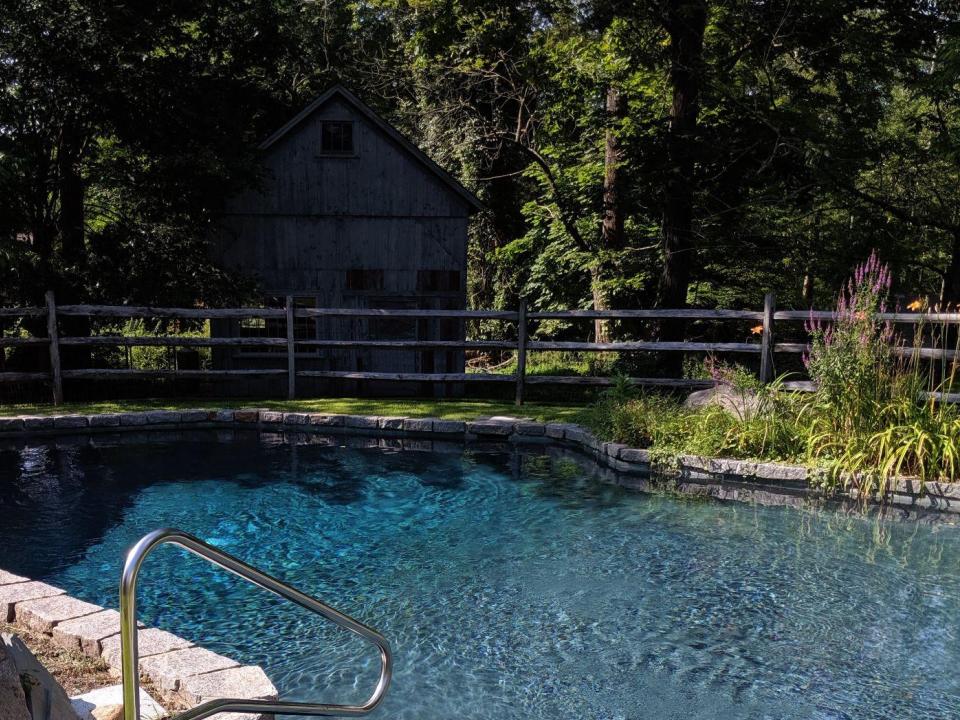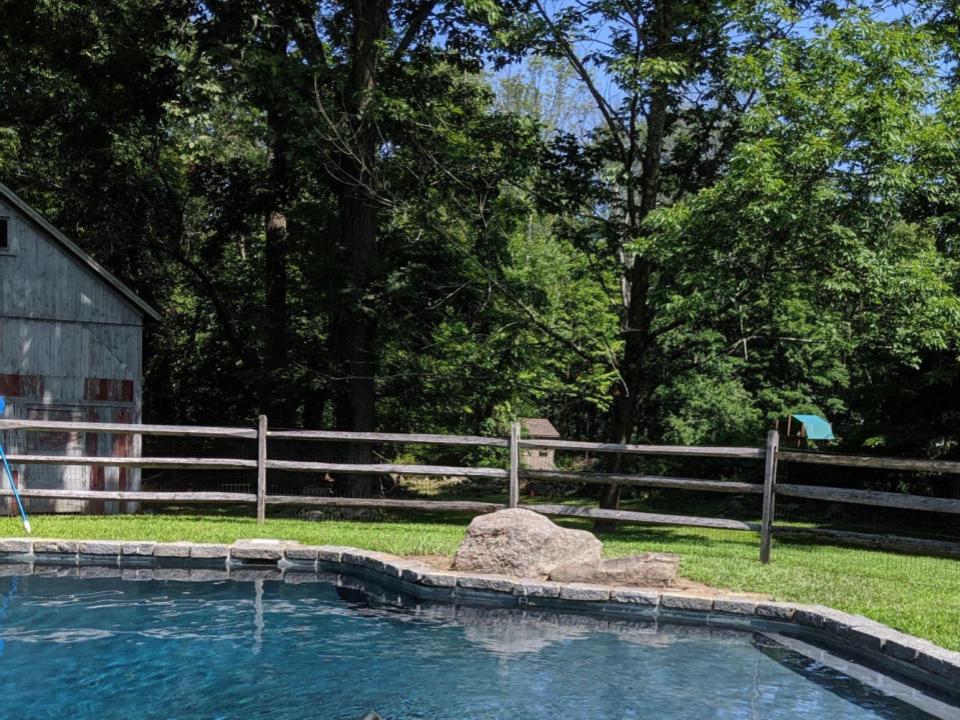You may think that your pool is just for family and friends. However, they are also for unwanted visitors like frogs and toads. Frogs are often drawn to pools due to the lure of water and the availability of food.
While they may seem harmless, frogs can pose health risks to swimmers and damage pool equipment when not dealt with in a timely manner.
Therefore, it is important to take some steps to keep frogs out of your pool and remove them if they jump in.
Why Are Frogs Attracted to Pools in the First Place?
Frogs, like most amphibians, are attracted to wet environments. Swimming pools provide:
- Water: Frogs are attracted to water sources and will seek them out, especially during dry periods.
- Food availability: Frogs feed on insects, spiders, and other small creatures that pools attract.
- Safe environment: The environment around pools, including nearby plants and structures, can provide convenient shade and shelter.

While these factors certainly make swimming pools an attractive location, you should take some measures to keep them out to avoid any potential health risks or damage.
Why You Don’t Want Frogs in The First Place
Frogs are generally harmless. However, they can pose health risks to swimmers and damage pool equipment by getting stuck.
Frogs may carry bacteria like salmonella. While proper pool testing and water balance will eliminate most bacteria, we should be trying to avoid them getting into the water as much as possible.
They can also lay eggs in your pool, sometimes up to 10,000 at a time! Frog eggs are pretty distinguishable in water. They look like tiny circular gelatin globs and typically clump together at the bottom of a pool’s surface.
If you notice eggs, skim out as much as possible and try to set them in a more suitable place, like a pond or creek around your house.
How to Keep Frogs Out of Your Pool
Depending on the chemical levels, frogs can survive for a couple of days in a pool. However, prolonged exposure to chlorine and salt absorbed through the skin will shorten their life span.
If you rescue a frog from your pool, try pouring fresh water on him to flush out some of the pool chemicals.
While you should always keep your water clean and balanced, a properly tested pool should minimize most issues that arise when it comes to frog prevention.
The below steps will help with prevention
Make it Easier for Them to Get Out
When frogs do happen to jump in, make it easy for them to get out! The easiest and most cost-effective way we have found is the FrogLog.
The FrogLog allows animals to easily escape to safety when accidentally landing in your pool or spa.
It’s a basic escape ramp for frogs (and other animals!) to climb up and out of the pool if they happen to find themselves in it.
The best place to put them is near the skimmer so they can jump on before getting caught in the basket.
Skim Them Out As Soon As You See One
When you see a frog, get it out. Using a pool skimmer is an effective way to scoop them out.

If you can or you have a wet area nearby, place the frog near a creek or lake. If they are in a more “frog-like” environment, there is less of a chance they will come back.
Use a Pool Cover
Using a pool cover at night can help prevent frogs from ever entering the water in the first place.
A solar cover can not only protect animals from getting in but also help prevent evaporation and maintain heat. Keep in mind frogs dislike warmer water!
Make sure the cover is secure and does not have any openings where frogs can slip through.
Keep Lights Off at Night
Pool lights and surrounding landscaping lights are a great way to add extra ambiance to your pool. Unfortunately, they also attract bugs and insects—a frog feast!
Consider turning off the lights overnight so your pool area doesn’t keep being a “Welcome Home” sign for frogs and other animals.
Keep the Water Circulating
Frogs prefer more stagnant water like ponds. It feels safer for them to hang out and also lay eggs.
Continuously moving water is a good way to make it less attractive to frogs. Consider installing a water feature as well for added movement and noise (first, learn about pH rises with water features).
Keep the Pool Heated
Frogs breathe by absorbing oxygen through their skin. Colder water can dissolve or “contain” more oxygen than warmer water. So heating the water could prevent a habitable environment for them.
Keep in mind that this can be an expensive solution if you use a heater, and it won’t completely deter frogs, so don’t heat it up just to keep them away.
Fence Around the Pool
Installing a fence around your pool can not only be a safety mechanism (and, in most jurisdictions, a legal requirement) but also be an effective way to keep animals out.
Make sure your fence isn’t permeable, especially on the bottom. Consider a vinyl or wood plank finish
Remove Breeding Grounds
You are going to need to put your landscaping hat on for this one! Frogs love high grass and weeds so they can hide away from predators.

Make sure the area around your pool is free of weeds and routinely cut your lawn so the grass doesn’t get too high. On the plus side, cutting the grass gives you more time to look at your beautiful pool on each pass!

Frog Barrier
As almost a last resort, try using natural frog repellents such as coffee grounds or vinegar around the perimeter of the pool as a barrier.
These methods are not harmful to frogs. Rather, they make them a bit uncomfortable around their feet and may sting them a bit, hopefully enough to deter them from going any further.
Frogs Are Still Our Friends
Even though we don’t like them getting into our pools, frogs are still beneficial to our environment and overall ecosystem.
These methods are meant to be as humane as possible. Please do not intentionally kill or harm frogs that happen to get into your pool.
Consider placing them in an environment they can thrive in, like a nearby pond or lake. If you want to create your pond, that’s even better!


